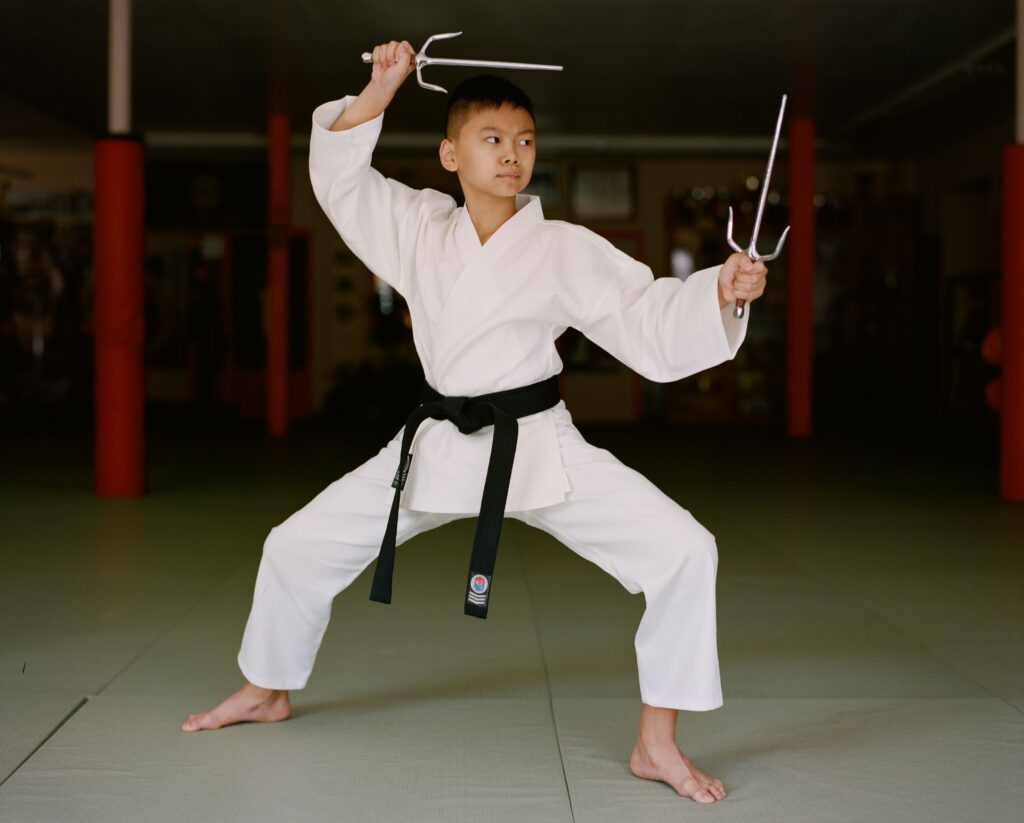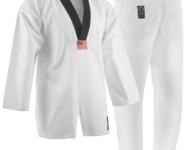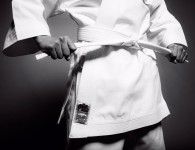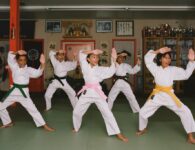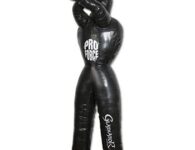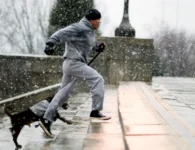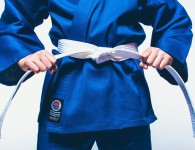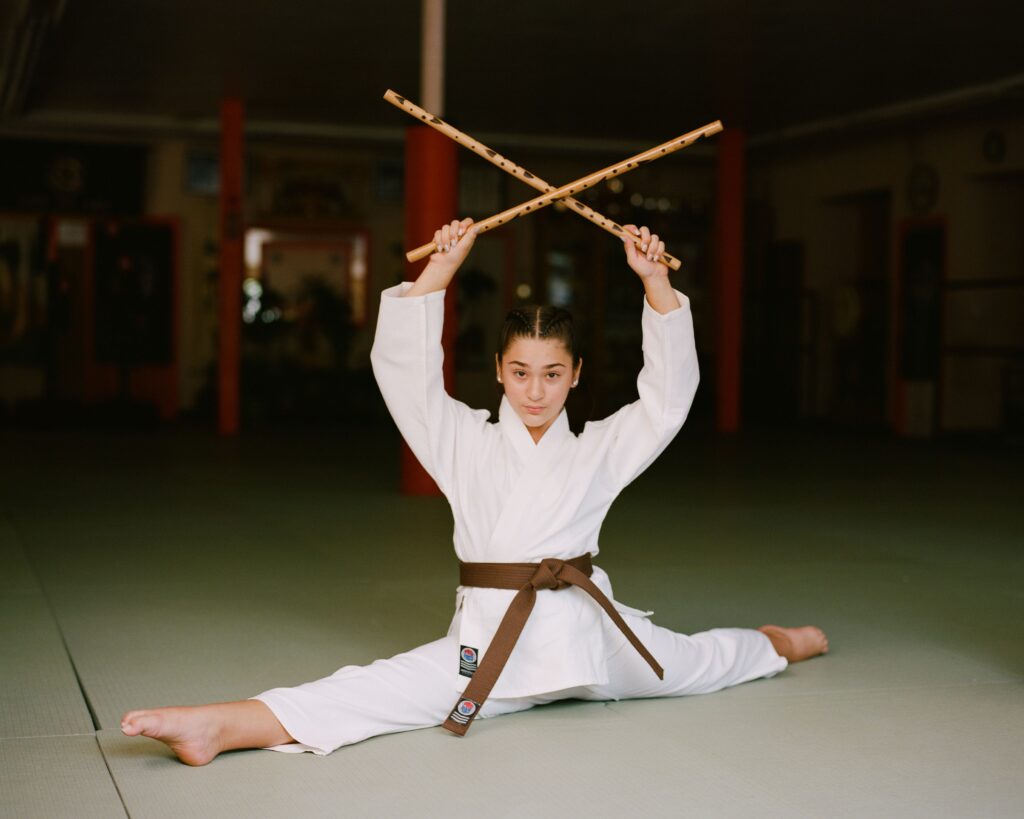
Martial arts weapons training at home is possible, but it might look a little — or a lot — different from what happens in a dojo setting.
Martial arts gyms are designed and built specifically for the demands of martial arts training. They have relatively high ceilings and open spaces to accommodate a number of students at one time. They’re stocked with much of the martial arts gear that you’ll need to train safely and effectively. (The specific collection of gear can vary depending on what martial art or combat sport they teach, but one thing all good gyms have in common is a large collection of high quality mats.) And everything is laid out to ensure that you and your classmates can get the best training possible without tripping on or hitting each other — or crashing into anything.
Unless you’re lucky enough to have a spare room or garage space that you can convert into a home gym, you’re probably not going to be able to recreate that experience. That doesn’t mean that the rest of us can’t do anything in a home setting, but it does mean that we have to be even more creative and responsible about our martial arts training. This is true for all home-based exercise, but it’s especially important for weapons training outside of a traditional gym environment. For your safety — and for the safety of your surroundings — you’ll need to develop a training routine that thinks outside of the dojo.
These tips for at-home martial arts weapons training will allow you to keep developing your skills when you can’t make it to the gym:
Invest in the right equipment.
This might be common sense, but it’s a good reminder for anyone who might be closer to the beginning of their martial arts weapons training and getting excited about all of the possibilities. Collector’s items and competition-level equipment might not be the best choices for solo drills and training at home. Now is not the perfect time to purchase a samurai sword, for example, and start swinging it around your house. Unless you’re an expert, or absolutely sure of what you’re doing on your own in a small space, it’s a better idea to stick with more beginner training tools like a foam training sword, plastic sai, a foam escrima, or a foam covered bo staff.

Train outside.
It’s probably not a good idea to take your new training weapon to the local park for practice, but if you have access to a less crowded and less public outdoor space with relatively level ground like a patio, backyard, or field, an outdoor session is a great option for solo martial arts training. You get to commune with nature and you don’t have to worry about your surroundings as much as you would indoors. With a wide open space and no ceilings or walls to worry about, you’ll have even more room for your training than you would in a large gym setting. And as long as the local wildlife doesn’t get too curious, you probably won’t have to worry about running into or accidentally hitting anything or anyone, either.
Create an appropriate indoor space.
If you have a space in your home that you can rearrange, either temporarily or permanently, it’s also possible to practice martial arts weapons training indoors. It just takes a little more preparation and care. Setting up an indoor space for training with weapons isn’t too different from setting up a space for bodyweight martial arts training like shadowboxing or grappling drills. Select the space that you’ll be using for your at-home martial arts training. Push back any furniture to clear a number of square feet of floor space. Hard wood or carpet can be ok for solo training in a pinch, but you’ll probably be more comfortable if you invest in some jigsaw mats to put down on the ground. Make sure that you are either far enough away from any walls, wall hangings, and light fixtures to avoid injuring them or yourself. If that’s not possible, find an alternate method of securing them. (If you’re worried about marking up your walls, for example, you can also use a set of jigsaw mats to protect them — and you.) Make sure you have enough clearance on all sides to be able to move your bo staff or sword in all directions without restriction or misadventure. Make sure any humans or pets who live with you are safely out of the way. Now you’re ready to start!
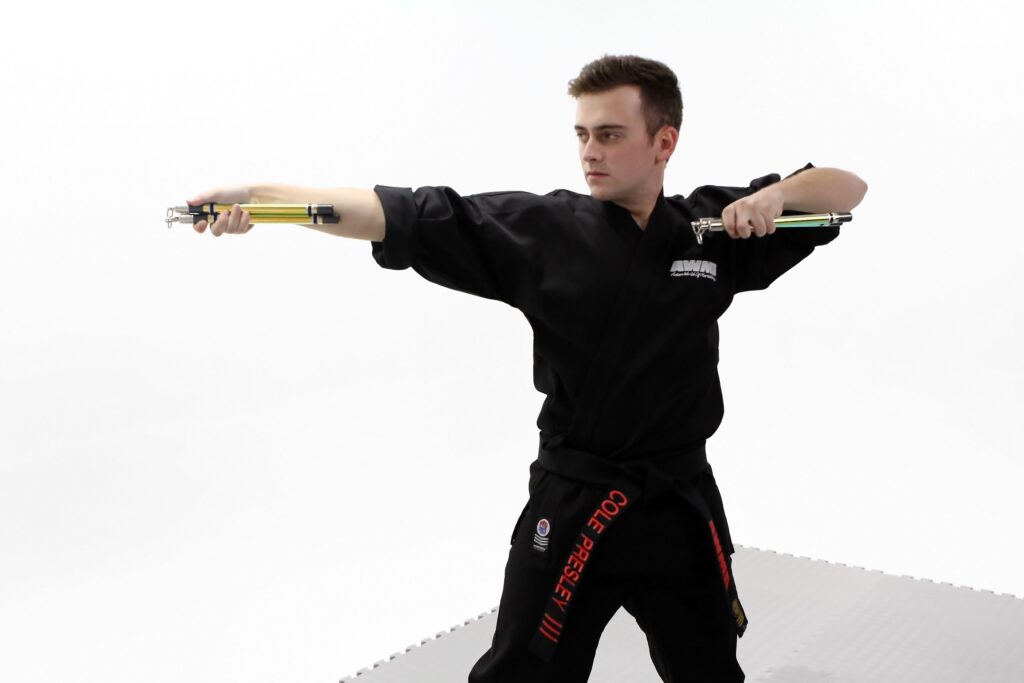
Go back to basics.
The bad news is that you probably won’t be able to practice and perfect some of the cooler looking techniques and flash with your training weapons at home. The good news is that training in a small space is an excellent opportunity to concentrate on your fundamentals. Slow it down. Develop your precision and your mental focus. Treat it like an exciting new challenge. Having a keen sense of your surroundings and knowing how best to work within them are vital skills for a martial artist. Working with training weapons in a small space will push you to take yours to a whole new level!
